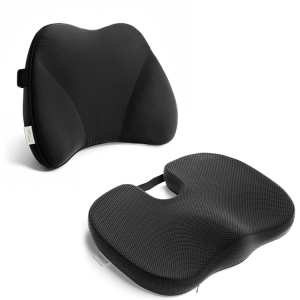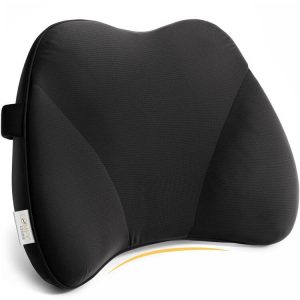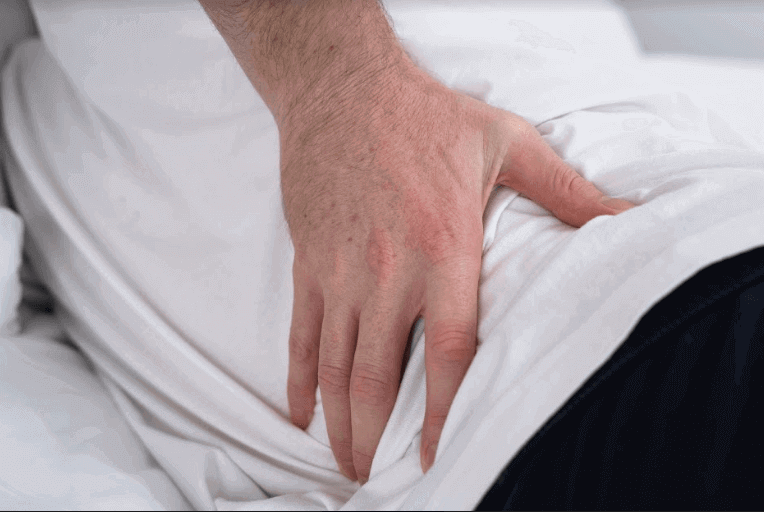
The first go-to option of homeowners back in the day was spring mattresses. However, the rise of memory foam mattresses and pillows in the 90s has led some shoppers to turn the other cheek.
The popularity of memory foam does not make spring mattresses obsolete in the market. Memory foam conforms to your body while relieving pressure. Meanwhile, spring is bouncier.
We’re going to talk about their pros, cons, price, and everything in between, so you can find the right mattress for your sleep.
Memory Foam
What is Memory Foam?
Memory foam is made by adding chemicals to polyurethane foam, which enhances the density and viscosity of the material.
The viscoelastic nature of memory foam enables it to mold your figure whilst delivering pressure-point relief. Memory foam is temperature-sensitive and pressure-sensitive.
Can You Sleep on Memory Foam Before 24 Hours?
Yes. You can sleep on memory foam before 24 hours. However, it comes with consequences. Manufacturers have made it a golden rule to let the mattress sit for 24 hours for it fully decompress before you can use it.
The materials in memory foam complete their volume within 6-8 hours, which means you can use it by then. Manufacturers are recommending to wait one full day to ensure you’re getting the best experience on your first night.
On the other hand, your warranty might become void. Some brands make it a rule to strictly wait for 24 hours or it’s at the cost of the warranty.
How long does it take for memory foam to stop smelling?
The smell of memory foam dissipates within 3-10 days. However, some brands may take up to over 20 days for it completely disappear.
You can combat the odor by using Baking Soda, the same one you use to deodorize a refrigerator. Follow these steps:
- Air out your memory foam
- Sprinkle baking soda all over your memory foam mattress
- Let the baking soda stay for an hour
- Clean the baking soda off with a vacuum
Another option is by covering the foam with mattress encasement, locking the smell inside in case you want to use it as soon as possible. Essential oil sachets work well to mask odors.
How long do the memory foam mattresses last?
A memory foam mattress lasts anywhere between 8 to 10 years, depending on its usage. It has about the same lifespan as any other mattress type, making it equal to spring foam in this matter.
You can preserve its lifespan by using a liquid-resistant mattress protector. It keeps making your mattress clean and stain-free.
What are the Advantages of Memory Foam Mattresses?
- Superior Comfort
Memory foam conforms to your body, reducing pressure on your spine. It allows you to sleep soundly, resulting to better rest.
- Promotes Natural Spine Alignment
Memory foam responds to heat and pressure, which reduces pressure point discomfort. It ensures that your spine, neck, and hips are ergonomically aligned to distribute weight evenly for a proper sleep posture.
- Reduces back and neck discomfort
Regular use of memory foam mattresses reduces chronic back and neck pain. It also brings positive results on chronic respiratory complications as memory foam eases breathing whilst asleep.
- A good option for people who allergy-sensitive
Memory foam mattresses are both hypoallergenic and dust mite-resistant. It makes a great choice for people who are dealing with respiratory issues.
- Whisper quiet
Unlike spring-type mattresses, memory foam mattresses do not squeak nor creak. Homeowners who sleep next to a light sleeper found this to be a smart solution as there’s no transfer of movement.
- Low maintenance
You don’t have to turn or flip your mattress as you won’t experience sagging. What’s more, they usually have a generous warranty of 10-25 years.
What are the disadvantages of memory foam mattresses?
- Heavy
A memory foam mattress weighs anywhere between 130-180lbs for a king size. On the bright side, you do not have to turn them, so this does not pose an issue.
- Hot
They are hotter than spring mattresses because of how it cradles your body and retains heat. However, manufacturers are integrating cooler open cell and gel technologies as a solution.
- Texture changes
You may notice the mattress to be softer during hotter climates and harder during colder climates. But since homes are now using central heating and cooling systems, this does not come off as a problem.
- Price
Memory foam mattresses are expensive, which may discourage people. If you find it too expensive, but you want to experience the benefits of using memory foam, you might want to invest in a memory foam pillow first.
Memory foam pillows are an affordable alternative option for homeowners who are experiencing neck, shoulder, and back pain. It won’t cost you an arm or leg, too.
Spring Mattress
What is a Spring Mattress?
A spring mattress contains plenty of metal coils that are suspended in other components. It delivers a lot of support for heavier users and people with back ailments. It works by pushing back the body with the same amount of pressure you apply.
These innerspring mattresses are the predecessors of foam, but their popularity remains. They provide a lot of bounce, temperature balance, and they’re affordable as well.
Are spring mattresses harmful?
Possibly. Your spring mattress may serve as a radiation antenna, which amplifies electromagnetic waves that may be connected to certain types of cancer. The coils in your box spring mattress amplify the weak TV radiation of certain frequencies.
A research study showed that Japan has lower rates of breast and prostate cancer than in Western countries, which may be due to the bed of choice as Japan uses futon instead of spring.
The solution is simple: You can either replace your bed with a nonmetallic mattress or you can position your bed away from the TV transmission tower to be on the safe side.
How long does a spring mattress last?
A spring mattress needs to be replaced once every 7-10 years. The reason why manufacturers offer a 20-year warranty is to cover specific parts, such as the springs and workmanship. However, it does not dictate its overall comfort.
How to tell it’s time to replace your mattress?
- Unrefreshed
Even after having a good night’s sleep. If you feel drowsy and tired, and you’re not suffering from sleep disorders, it might be because of your over dated mattress causing you to toss and turn throughout the night. Your body is subconsciously trying to find a comfy sleeping position that’s unattainable.
- Aches and pains
If you’re experiencing stiffness first thing in the morning, it might be because of your mattress. It has lost its ability to provide optimal support. Your mattress has matted down over time, so you’re getting pressure points by sleeping directly on springs.
The comfort layers are losing compression, making your midsection sag into the mattress, which causes neck, shoulder, and back discomfort.
- Couch is more comfortable
You may find sleeping on the couch or other beds more comfortable than your own. This may be a habit that you’re unaware of, so be mindful of what your body is trying to tell you.
- Squeaks and creaks
What supports your mattress co-relates to how much it can provide support to you. If you believe that your mattress is in good shape, but something feels a little off, then you might want to check the box spring and frame.
- Visible sag
If there are sagging impressions on your mattress, it’s about time you get a replacement. It is an indicator that your mattress is losing resiliency. Sags that are 1.5 inches in depth are enough to cause back, neck, and shoulder pain.
- Dust allergies
If your allergies worsen at night or first thing in the morning, then a new mattress might be the answer. Your bed might be susceptible to dust mites as they flourish on spring mattresses and bedding. Waterbeds and memory foam are dust mite-free.
- Drastic weight change
Since mattresses have a long lifespan, it’s normal for the owner to undergo significant weight changes. Common reasons include surgery, pregnancy, dietary change, and age.
What you may have found comfortable 5 years ago may not provide you with the same level of comfort as it did back then despite being in good condition.
Tip: You can buy a mattress topper if the problem is firmness as a short-term solution.
What are the advantages of spring?
- Affordable
Innerspring mattresses are cheaper than memory foam, costing only $900 on average and $300 for cheaper brands. The popularity of spring is mainly due to its affordability.
- Consumer familiarity
Consumers are more familiar with spring as it’s been in the market for decades. If there’s a new technology released, homeowners are quick to accept them. What’s more, people can adapt to napping on spring than memory foam, so there’s no adjustment period.
- Allows airflow
The coil layers enable airflow, which provides a cooler surface to sleep on, unlike memory foam that retains body heat.
- Sinks less
Coil mattresses sink less as it is firmer, making it a good option for heavier people. They’re also quite durable as well thanks to their sturdy construction.
What are the disadvantages of spring?
- Wears faster
Despite its durable construction, the springs lose support in a few years and padding becomes compressed.
- Difficult to set up
You need at least two helping hands to have the mattress set up. Although it’s about the same weight as memory foam (give and take a few pounds) it does require you to air it out from time to time.
- Dust mites
Some brands use wool and fiber as their underlying sheets, which provides a conducive setting for allergens, like dust mites. Hence, regular maintenance is needed.
- Motion transfer
You can easily wake up your partner with the slightest movements, which affects quality sleep. The spring coils also make sounds.
- Lacks back support
It does not contour your body, which results in back, neck, and shoulder pain. (insert knee pillow)
Memory Foam vs. Spring – Is Memory Foam Better Than Spring Mattress?
Yes. If we’re going to pit them against each other and compare the pros and cons, memory foam comes up as a winner.
However, there are certain cases where a spring mattress is a more practical solution. People who are dealing with hot sweats or night sweats are better off with spring.
Use a spring mattress if you have these conditions:
- Lymphoma
- Menopause
- Low blood sugar
- Hormonal problems
- Infections
- Hyperhidrosis
Conversely, a memory foam mattress is for people who have back pain. It prevents aches and pains by:
- Supports the natural curve of the spine
- Responds to pressure points
- Evenly distributes body weight
- Reduces stress and fatigue
- Increases comfort
Unless you have medical conditions that require you a cooler or firmer mattress, a Memory Foam mattress is the better option.
Key features that make memory foam triumph over spring:
- Promotes ergonomic sleeping posture (nobody aches)
- Durable with low maintenance requirements
- Dust mite-resistant
If you want to purchase a memory foam mattress, but it’s currently out of budget, you may opt for a memory foam pillow instead. These pillows relieve shoulder, neck, and back pain at only a fraction of the cost.






